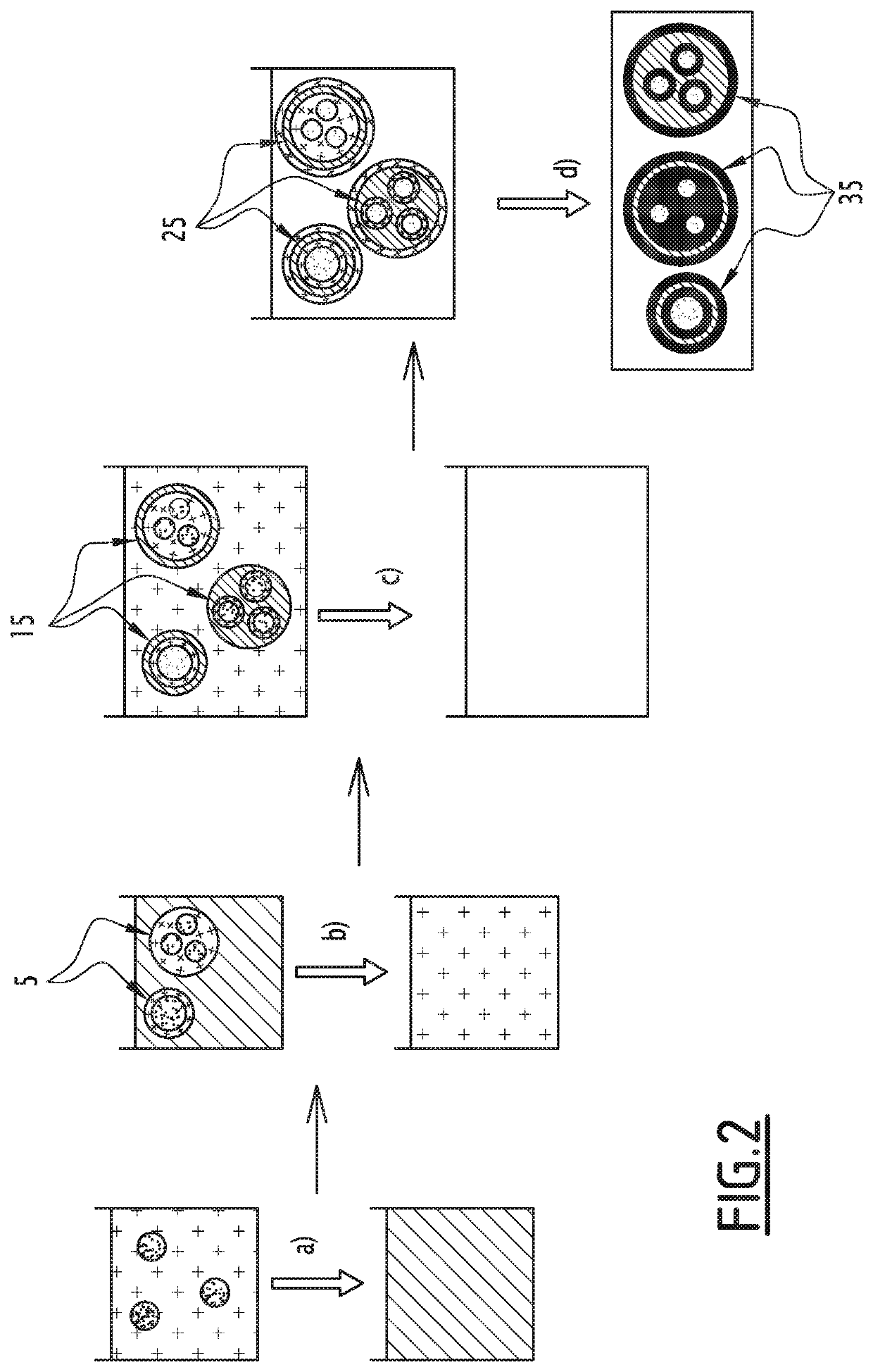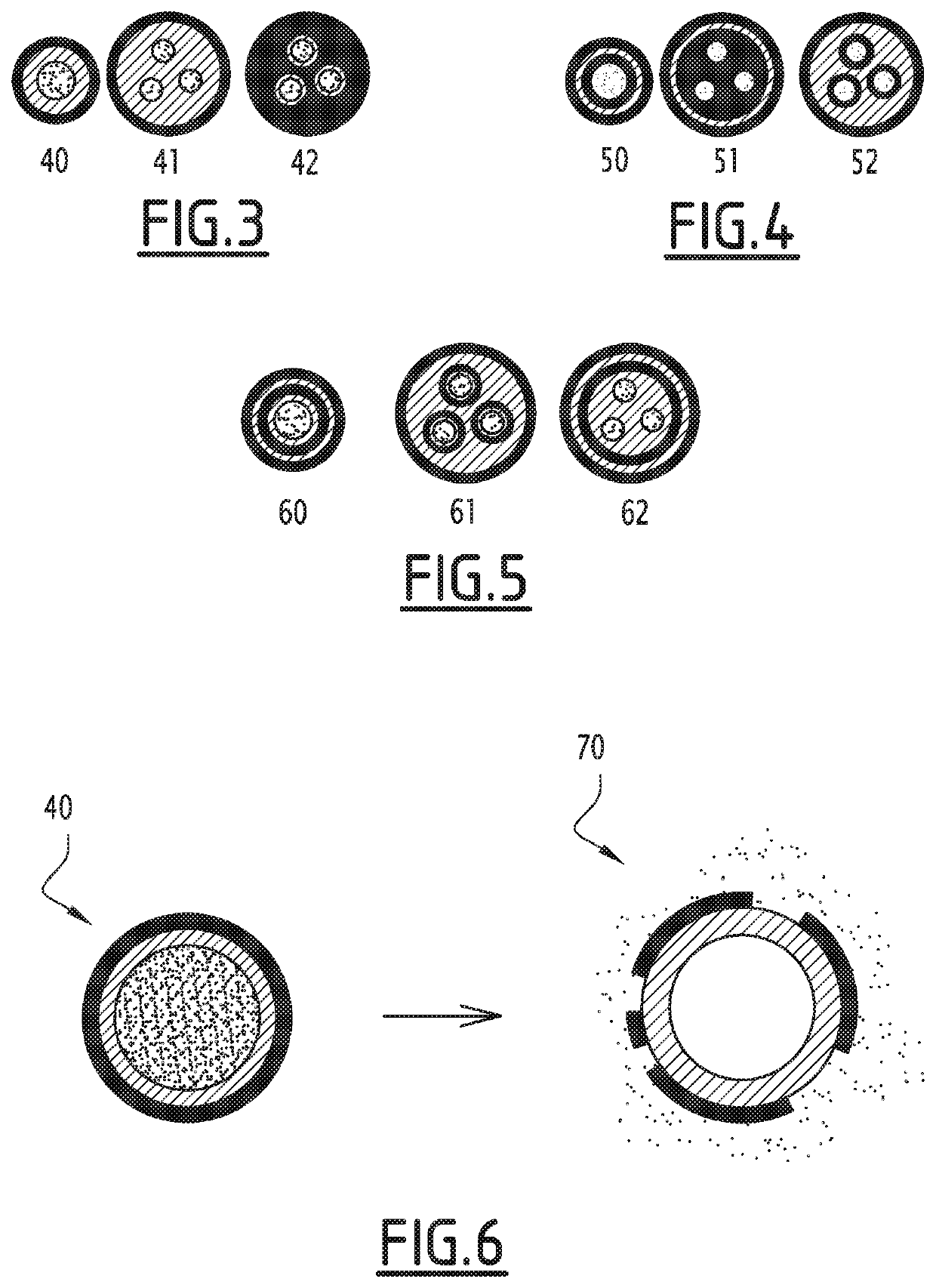Encapsulation method
- Summary
- Abstract
- Description
- Claims
- Application Information
AI Technical Summary
Benefits of technology
Problems solved by technology
Method used
Image
Examples
example 1
on of Capsules According to the Invention
[0317]1. Capsules According to the First Alternative of the Method
[0318]This example applied the first alternative of the method according to the invention and is directed to formulate in a single and same formulation, the kit with 2 components “SYLGARD® 184 Silicone Elastomer” marketed by DOW CORNING.
[0319]This kit consists of two components and comprises, on the one hand, a composition of siloxane and, on the other hand, a composition comprising a catalyst which is normally to be mixed with the siloxane composition for cross-linking it. Thus, if both components are mixed, a solid polymeric matrix is formed in less than 24 hours at room temperature.
[0320]In this example, the composition C1 corresponded to the first component of the kit above (siloxane composition) and the composition C4 corresponded to the second component of the kit above (catalyst composition):
[0321]Composition C1 (component no. 1 of the kit SYLGARD® 184 Silicone Elastomer...
example 2
of the Capsules According to the Invention
[0366]The viscosity of the compositions obtained at the end of step d) of examples 1.1, 1.2 and 1.3 were measured over time in order to check that the encapsulated composition C1 in the core of the capsules remained therein well confined and in particular it did not encounter the composition C4.
[0367]The viscosity was measured at 25° C. with a rheometer HAAKE™ Rheostress 600 over 30 days and no variation was observed, showing that no leak of composition C1 had taken place.
[0368]On the 30th day, the compositions were brought to 90° C. for 2 h with view to releasing the composition C1. At the end of this heating, the viscosity could not be measured since the compositions had polymerized.
example 3
tion of the Capsules According to the Invention
[0369]The composition obtained in example 1.1 was observed under a microscope (Olympus IX71 microscope equipped with an objective UPlanSApo 100× / 1.4).
[0370]Before heating the composition (2 h at 90° C.), the capsules were intact.
[0371]After heating (2 h at 90° C.), the capsules were fragmented.
PUM
| Property | Measurement | Unit |
|---|---|---|
| Temperature | aaaaa | aaaaa |
| Composition | aaaaa | aaaaa |
Abstract
Description
Claims
Application Information
 Login to View More
Login to View More - R&D Engineer
- R&D Manager
- IP Professional
- Industry Leading Data Capabilities
- Powerful AI technology
- Patent DNA Extraction
Browse by: Latest US Patents, China's latest patents, Technical Efficacy Thesaurus, Application Domain, Technology Topic, Popular Technical Reports.
© 2024 PatSnap. All rights reserved.Legal|Privacy policy|Modern Slavery Act Transparency Statement|Sitemap|About US| Contact US: help@patsnap.com










